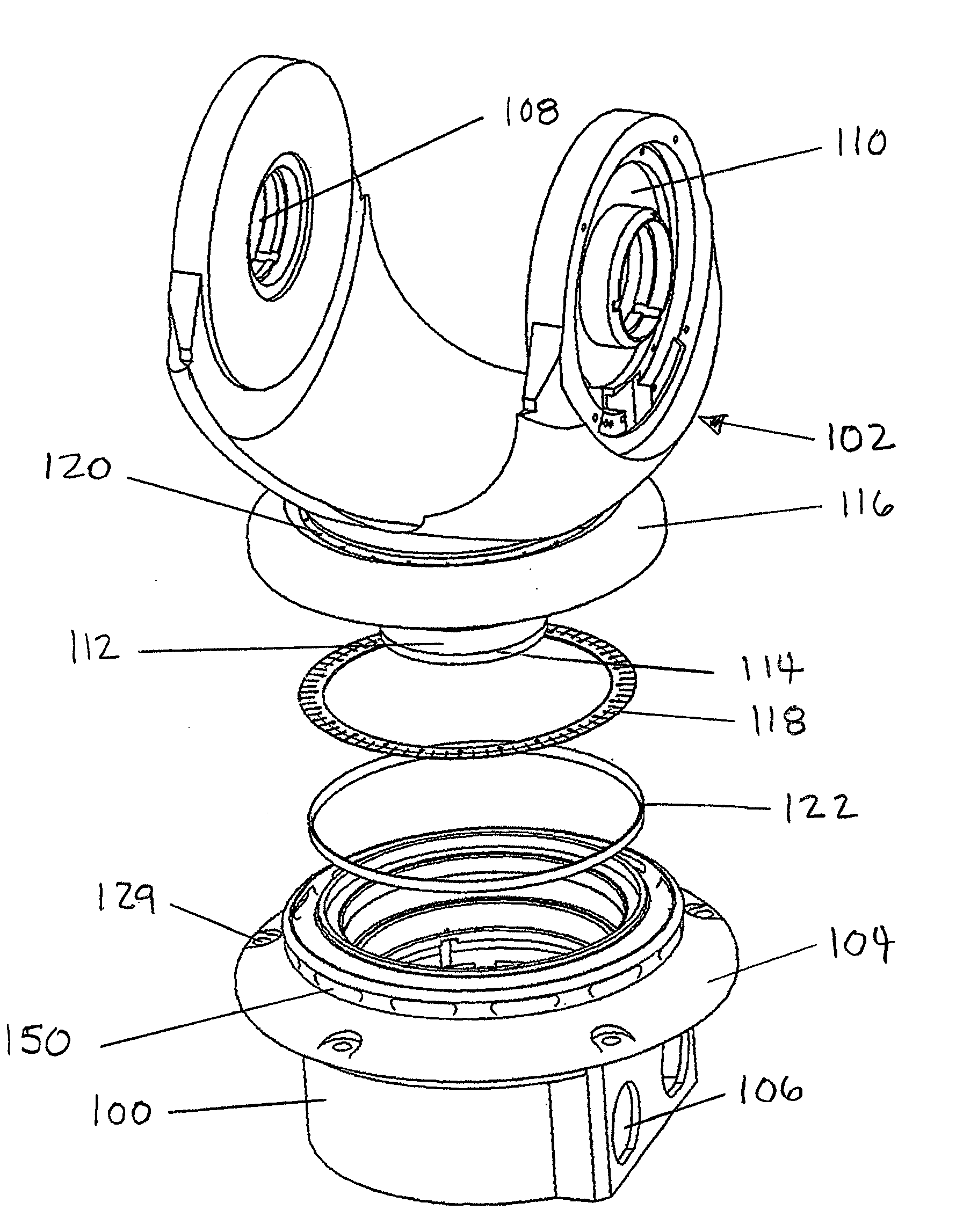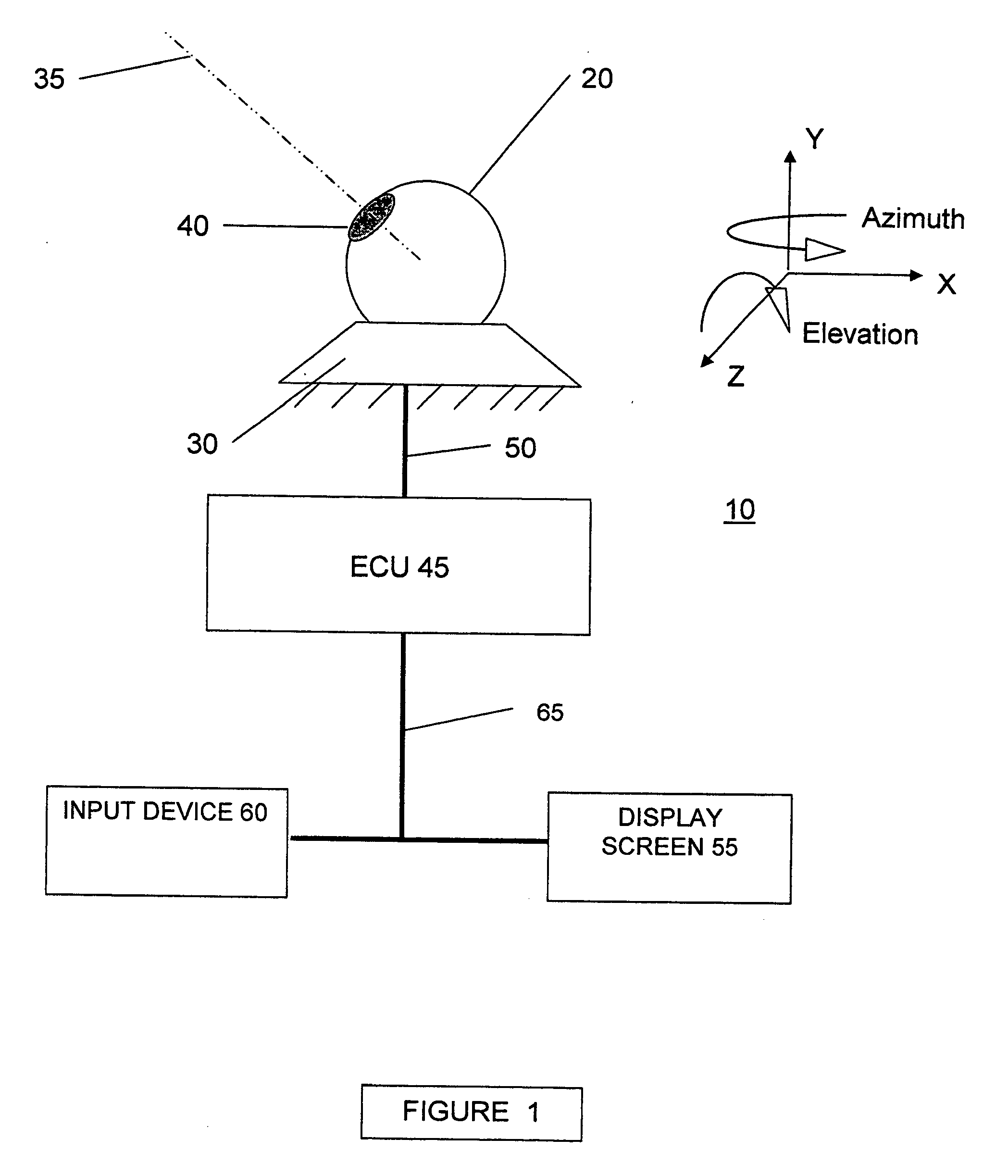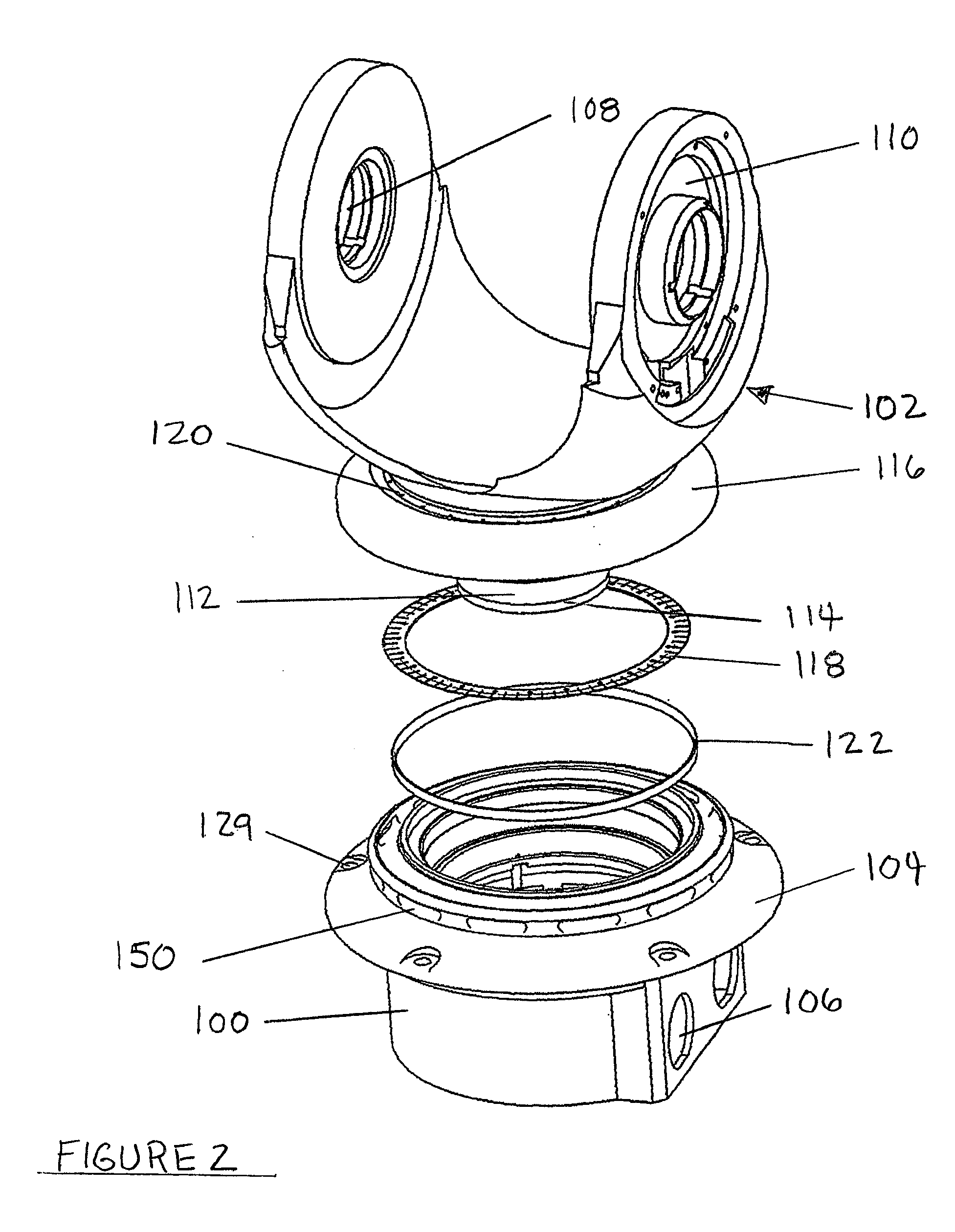Sealed rotary joint for turret rotator
a rotary joint and turret technology, applied in the direction of electrostatic holding devices, machines/engines, machine supports, etc., can solve the problems of contaminate penetration failure of users problems such as damage to land and sea based camera systems, and problems such as the use of upward facing turrets and ball assemblies
- Summary
- Abstract
- Description
- Claims
- Application Information
AI Technical Summary
Benefits of technology
Problems solved by technology
Method used
Image
Examples
Embodiment Construction
[0022] Referring to FIG. 1, a block diagram depicts a sensor / emitter system 10 according to the present invention. The sensor / emitter system 10 includes a sensor or emitter payload packed inside a spherical ball housing 20. The payload may include sensors and emitters, optical systems, and control elements as required. In general, each sensor or emitter system of the payload includes a field of view, which may be adjustable in size, and a line of sight or pointing direction that is substantially coincident with the center of the field of view. More generally, the payload may comprise any device that has a pointing direction and needs to be rotated about one or two axes to direct the pointing direction at a target object. In FIG. 1, a pointing direction 35 is centered in an aperture 40, formed in the ball housing 20; however, the aperture 40 may comprise more than one aperture, depending upon the payload configuration, and the aperture 40 may be used to receive or emit radiation.
[00...
PUM
 Login to View More
Login to View More Abstract
Description
Claims
Application Information
 Login to View More
Login to View More - R&D
- Intellectual Property
- Life Sciences
- Materials
- Tech Scout
- Unparalleled Data Quality
- Higher Quality Content
- 60% Fewer Hallucinations
Browse by: Latest US Patents, China's latest patents, Technical Efficacy Thesaurus, Application Domain, Technology Topic, Popular Technical Reports.
© 2025 PatSnap. All rights reserved.Legal|Privacy policy|Modern Slavery Act Transparency Statement|Sitemap|About US| Contact US: help@patsnap.com



